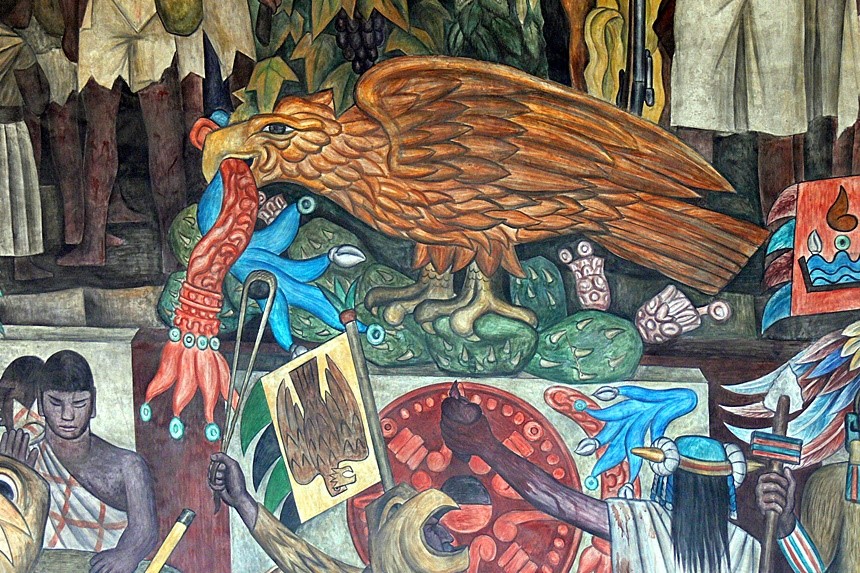This series by American studies professor Ben Railton explores the connections between America’s past and present.
In the prior two posts in this series on Myths and Realities of the Mexican-American Border and Mexican Americans as Political Prop in the 20th and 21st Centuries, I’ve traced the Mexican-American border’s constructed and contested nature, the border patrol’s origins and initial role in the Chinese Exclusion era, and the use of Mexican Americans as a political prop throughout the 20th century. These histories form a vital backdrop for any conversations about the border and immigration, and as a result need to be more fully understood in our heated contemporary moment.
Yet one element is largely missing from those posts: the voices and stories of Mexican Americans themselves. In each historical period, we find compelling stories that certainly highlight the effects of our most exclusionary national policies but that also exemplify how Mexican Americans have fought for their own and their community’s rights within an evolving America.
María Amparo Ruiz de Burton Depicts the Mexican-American Experience
The first Mexican-American author to publish fiction in English, María Amparo Ruiz de Burton, experienced first-hand and wrote about the late 19th century aftermath of the Mexican-American War and the Treaty of Guadalupe Hidalgo. The daughter and granddaughter of Mexican generals and political leaders, after the Treaty a teenage Ruiz moved north to Alta California with her family. She met and married an American military officer, and they began operating a ranch just outside of California. But he was injured during the Civil War and died shortly thereafter, and when Ruiz de Burton returned to California with her two children she found that Anglo squatters had occupied the ranch (a far too common experience for Mexican-American landowners in the era).
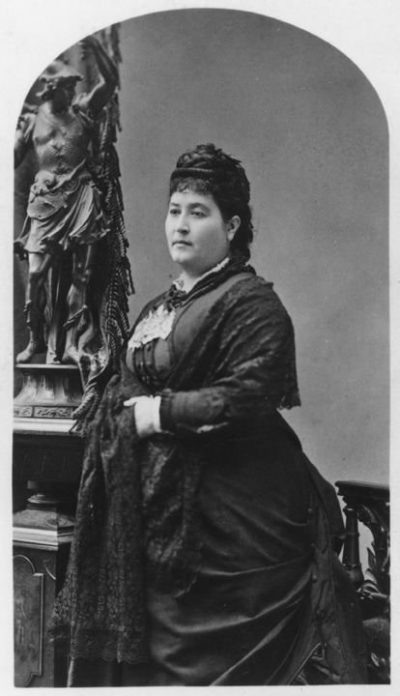
For the remainder of her life Ruiz de Burton fought legal and political battles to regain and secure her ranch and land claims. At the same time, she published a number of literary works, including two compelling novels: Who Would Have Thought It? (1872), which uses the story of an adopted mixed-race girl to satirize Anglo-American ideals and prejudices; and The Squatter and the Don (1885), which highlights the experiences of both Anglo arrivals and Mexican landowners in post-Treaty California. While these novels do not shy away from the harshest realities of late 19th century Mexican American life, Ruiz de Burton also portrays an American future that includes (and in Squatter romantically unites) all these cultures and communities.
Stories from the Mexican Repatriation Program
The Mexican Repatriation program of the 1930s represented one of the first national policies that sought instead to exclude Mexican Americans from that shared future. Francisco Balderrama and Raymond Rodríguez’s Decade of Betrayal: Mexican Repatriation in the 1930s (1995) features the stories of many of the millions of Mexican Americans (a majority of them birthright citizens) affected by this exclusionary policy. In one telling moment in the book, Southern California radio host José David Orozco and his guest Dr. José Díaz share stories of married couples and families separated by the region’s deportation sweeps. And the policy’s effects were felt nationwide, as illustrated by a groundbreaking 1973 study of the near-complete destruction of the Mexican-American community in Gary, Indiana (where many had been employed by U.S. Steel).
The Successes of the League of United Latin American Citizens
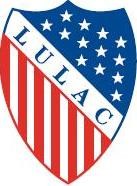 Many Mexican Americans fought back against the era’s discriminations. Founded in February 1929 in Corpus Christi, Texas, the League of United Latin American Citizens (LULAC) was modeled in part on the National Association for the Advanced of Colored People (NAACP). Two founding members, Pedro and María Hernández, were particularly instrumental in developing LULAC’s multilayered social and political agenda: María, an elementary school teacher and mother of ten, focused on educational outreach and support for expectant and new mothers; Pedro, a political and legal activist, organized a successful lawsuit challenging the Texas legislature’s longstanding policy of excluding Mexican Americans from juries. Over the next decades LULAC would extend those efforts: creating community education and preschool programs (such as the popular Little School of the 400 program); conducting voter registration campaigns and opposing efforts to disenfranchise Hispanic voters; suing school districts that denied Mexican-American students equal access and opportunities; and advocating for both basic rights and full citizenship for Mexican and Hispanic Americans. Two of their successful educational lawsuits, Mendez v. Westminster (1945) and Minerva Delgado v. Bastrop Independent School District (1948), helped create the precedents that would lead to the Supreme Court’s turning point anti-segregation decision in Brown v. Board of Education (1954).
Many Mexican Americans fought back against the era’s discriminations. Founded in February 1929 in Corpus Christi, Texas, the League of United Latin American Citizens (LULAC) was modeled in part on the National Association for the Advanced of Colored People (NAACP). Two founding members, Pedro and María Hernández, were particularly instrumental in developing LULAC’s multilayered social and political agenda: María, an elementary school teacher and mother of ten, focused on educational outreach and support for expectant and new mothers; Pedro, a political and legal activist, organized a successful lawsuit challenging the Texas legislature’s longstanding policy of excluding Mexican Americans from juries. Over the next decades LULAC would extend those efforts: creating community education and preschool programs (such as the popular Little School of the 400 program); conducting voter registration campaigns and opposing efforts to disenfranchise Hispanic voters; suing school districts that denied Mexican-American students equal access and opportunities; and advocating for both basic rights and full citizenship for Mexican and Hispanic Americans. Two of their successful educational lawsuits, Mendez v. Westminster (1945) and Minerva Delgado v. Bastrop Independent School District (1948), helped create the precedents that would lead to the Supreme Court’s turning point anti-segregation decision in Brown v. Board of Education (1954).
The Bracero Program Sparks Activism
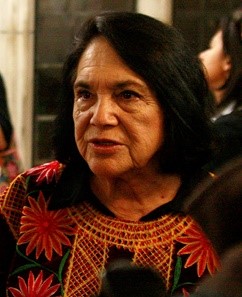
The Bracero Program was series of agreements between the U.S. and Mexico that promised decent living conditions to Mexicans who came to the U.S. to fulfill a labor shortage in agriculture, starting in the 1940s. It brought new Mexican Americans to the U.S., and they added their voices to this evolving story. The National Museum of American History’s wonderful exhibition, Bittersweet Harvest: The Bracero Program 1942-1964, captured many bracero voices and experiences, documenting each stage of bracero life from the journey and the border to brutal conditions, labor activism, and multi-generational family legacies. One quote, from former bracero Guadalupe Mena Arizmendi, sums up both the program’s realities and its possibilities: “Es puro sufrimiento, le digo, allí sí se sufre y allí andamos, eso queríamos (I tell you, it is pure suffering, there you suffer and there we were, that is what we wanted).” Mexican-American author Tomás Rivera, himself the son of braceros, portrays the community’s experiences and legacies with grit and power in his novel And the Earth Did Not Devour Him (1971).
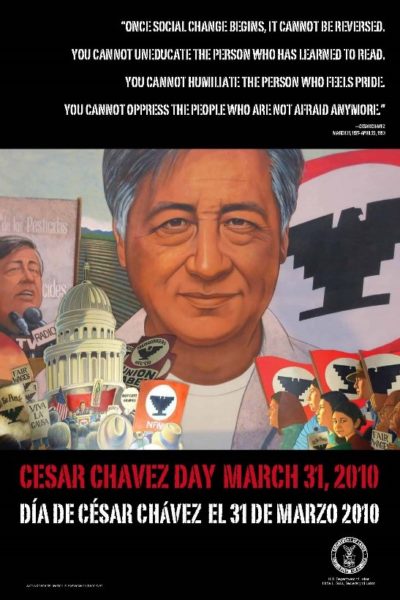
Out of the Bracero Program and era came as well the first moves toward national activism on behalf of migrant laborers. Dolores Huerta, the daughter of a migrant laborer father and a mother who ran a hotel and restaurant for migrant workers, founded the Agricultural Workers Association in 1960 when she was just 30 years old; two years later she joined forces with César Chávez, the son of two migrant laborers and then the Executive Director of the activist Community Service Organization, to co-found the National Farm Workers Association (NFWA). A few years later, the NFWA joined striking Filipino-American laborers from the Agricultural Workers Organizing Community (AWOC) in the 1965 Delano (CA) grape strike, a hugely influential effort that would last nearly five years, lead to the founding of the United Farm Workers (UFW) when the two groups merged, and fundamentally reshape late 20th century American labor and politics.
Operation Wetback’s Legacy
These decades continued to witness anti-Mexican-American discrimination and exclusionary policies, most notably the mid-1950s federal deportation program known as Operation Wetback. Historian Mae Ngai’s award-winning Impossible Subjects: Illegal Aliens and the Making of Modern America (2004) features the stories of many of those affected by Operation Wetback. She highlights, for example, a July 1955 incident in which “some 88 braceros died of sunstroke as a result of a roundup that had taken place in 112-degree heat, and … more would have died had Red Cross not intervened.” Elsewhere she quotes a congressional investigation that referred to a ship transporting deportees to Mexico as the equivalent of “an eighteenth century slave ship” and a “penal hell ship.” LULAC’s newsletter depicted deportees arriving in Mexico as “broken men, with strength spent and exhausted by the senseless struggles of a life revolving around slavish, ill-paid labor, and the degradation of jail and prison cells.”
The Accomplishments of the National Council of La Raza
These evolving exclusionary policies required new activist organizations, and the 1960s saw the creation of a vital one: the National Council of La Raza. La Raza was also the name of a community newspaper edited by Eliezer Joaquin Risco Lozada, a prominent young activist in Fresno who would go on to open rural health clinics throughout the region, create the first La Raza Studies (later Chicano Studies) program at Fresno State University, and advocate for Latino-American rights throughout his inspiring life. In March 1968, inspired by Lozada and other activists, Southern California high school students led the East Los Angeles Walkouts, a stunning and successful mass action that garnered national attention and made clear that Mexican- and Latin-American communities were fully part of the era’s burgeoning civil rights movements.
Writers Chronicle Mexican-American Life
The late 20th and early 21st centuries saw the emergence of a number of Mexican-American creative writers who brought these histories, stories, and communities into their ground-breaking literary works. Novelist Rolando Hinojasa has created, across the 15 volumes to date in the Klail City Death Trip Series, a fictional border county and community modeled on the South Texas Rio Grande Valley in which he grew up. Scholar and activist Gloria Anzaldúa likewise grew up in the Rio Grande Valley, and turned that border setting into the basis for her multi-lingual multi-genre masterpiece Borderlands/La Frontera: The New Mestiza (1987) among many other works. And Professor Norma Cantú, the foremost translator of and scholar on Anzaldúa’s works, has published her own memoirs as both a Mexican-American immigrant and a 21st century contributor to the continuing story of Mexican-American identity and community.
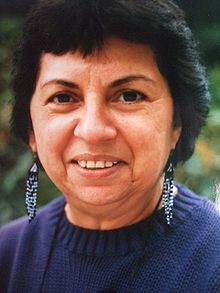
As part of his trip to the Rio Grande Valley and the border last week, President Trump visited Anzalduas Park, a county park along the river. Perhaps this historical moment can produce more than further border and immigration debates—perhaps it can lead us to more collective engagement with the story of Gloria Anzaldúa and other Mexican-American figures and communities. Their voices deserve a far more central role in our collective memories, our present conversations, and our shared future.
Note: This piece benefited greatly from the suggestions of Professors Laura Belmonte and John Buaas.
Become a Saturday Evening Post member and enjoy unlimited access. Subscribe now
